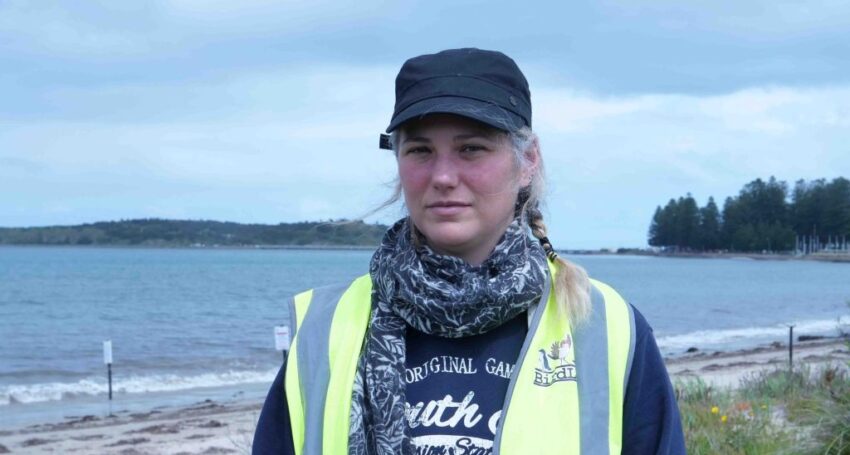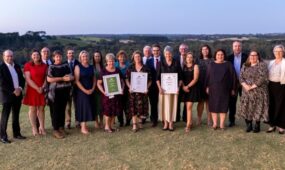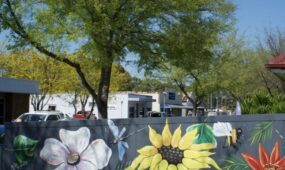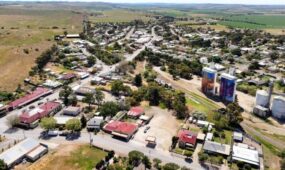Hi-tech help for Granite Island’s little penguins
Regional
Acoustic software and night-time videoing has found that Granite Island’s remaining penguin colony is under threat from the public disturbing them as they try and catch a glimpse of the burrowing birds.

Sign up to receive notifications about new stories in this category.
Thank you for subscribing to story notifications.

The Flinders University Volunteer Group was formed by penguin ecologist Diane Colombelli-Négrel, the principal investigator of the Bird Lab at Flinders University, and citizen scientist Stephen Hedges to regularly monitor the little penguins after a devastating fox attack that wiped out a third of the population in 2020.
“The numbers went from around 44 adults and 20-something chicks to 16 adults and a few chicks,” Hedges said.
“Because the numbers became so low, we made a conscious decision to protect and to educate.
“The idea was that we would talk to people visiting the island and educate them that if they saw a penguin they should step back, be quiet and turn off all white lights and flashes.”
The volunteer group, which currently has around 30 members, visits the island in a pair each night to count the penguins and educate the public on proper penguin etiquette.
These steps are being taken to limit the impact of human disturbances on the little penguins which Colombelli-Négrel said is causing obvious stress to the remaining population.

Signage at Granite Island. Photo: Matthew Agius
She and student volunteers set up continuous audio and video monitoring on the island after the attacks to collect round-the-clock data on penguin behaviour and possible disturbances.
The video monitoring allows the team to count the penguins and monitor for any threats or disturbances on the island when they are not surveying in person.
Because little penguins communicate vocally, acoustic software lets the team to monitor changes in their calls, see how loud and continuous noises interrupt how they call to each other and further alert the team to their presence if they’re not directly in sight of a camera.
“We found a significant increase in disturbances since 2016 with the combination of fewer penguins on the island and more people wanting to see them,” Colombelli-Négrel said.
She noted the disturbances are disrupting both the penguins’ communications and their ability to make it safely to their burrows.
“Granite Island has a seawall and when the birds arrive after feeding in the ocean, they sit on the seawall and hide instead of coming onto the island and going back to their burrows and their chicks,” she said.
“This means the chicks aren’t being fed as often and we did lose some chicks during the ongoing causeway construction.
“It is also having a long-term impact where we are seeing juvenile birds dying and we believe it is a flow-over of the chicks not receiving as much food due to the disturbances and then not being strong enough to survive as adults.”

Dr Diane Colombelli-Negrel, a director of the Flinders University Birdlab project. Photo: Matthew Agius
Human presence is also impacting little penguins during critical times such as breeding and moulting seasons when they are forced to stay on land.
People huddling around burrows during breeding season can cause stress to the chicks and may prevent the adult penguins from returning to the burrows after feeding.
During moulting season, penguins may choose to stay near the ocean to hide instead of returning to their burrows and can freeze to death as they don’t have a proper coat to protect against the cold.
“Granite Island is such an important and unique place as it is still connected to the mainland, so it is not really an island so there is a lot of human activity,” Colombelli-Négrel said.
“At the same time, it is still fairly wild compared to other places – so it is a very unique place that we definitely want to preserve.”
According to Colombelli-Négrel, there are ways we can lessen our impact on the little penguins and give them the best chance of survival going into the future.
“The best thing people could do is not come at night and give the penguins a break. I know that it is tempting and we do want to see them, but it is important to give them a break,” she said.
“If you do come to the island and see one, step away and let the birds do their thing and don’t attract a bunch of people to rush over and see the bird.
“Also don’t use a torch – bright lights can blind a penguin for several days and that can have a huge impact on their fitness in the future as they might not be able to navigate to their burrow or enter the ocean to feed.”
The group hopes that through continued monitoring of the penguins and with more education of the public, the population will continue to grow and hopefully thrive in the future.
“The numbers are holding on,” Hedges said. “Some people gave up on the colony a few years ago after the fox attack, but they are holding on and now we need to give them the best chance of survival that we can.”
Jump to next article




